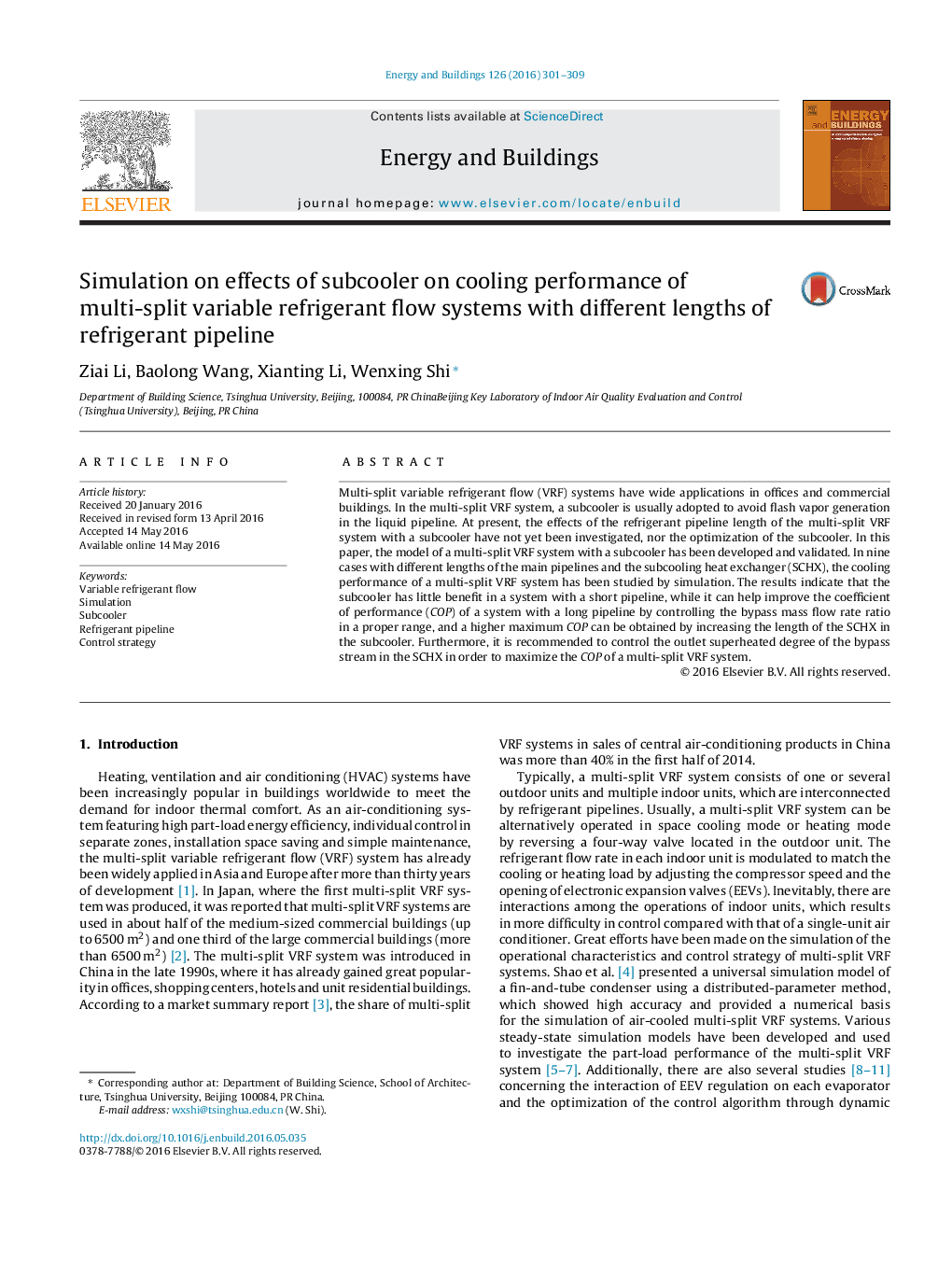| Article ID | Journal | Published Year | Pages | File Type |
|---|---|---|---|---|
| 261935 | Energy and Buildings | 2016 | 9 Pages |
Abstract
Multi-split variable refrigerant flow (VRF) systems have wide applications in offices and commercial buildings. In the multi-split VRF system, a subcooler is usually adopted to avoid flash vapor generation in the liquid pipeline. At present, the effects of the refrigerant pipeline length of the multi-split VRF system with a subcooler have not yet been investigated, nor the optimization of the subcooler. In this paper, the model of a multi-split VRF system with a subcooler has been developed and validated. In nine cases with different lengths of the main pipelines and the subcooling heat exchanger (SCHX), the cooling performance of a multi-split VRF system has been studied by simulation. The results indicate that the subcooler has little benefit in a system with a short pipeline, while it can help improve the coefficient of performance (COP) of a system with a long pipeline by controlling the bypass mass flow rate ratio in a proper range, and a higher maximum COP can be obtained by increasing the length of the SCHX in the subcooler. Furthermore, it is recommended to control the outlet superheated degree of the bypass stream in the SCHX in order to maximize the COP of a multi-split VRF system.
Related Topics
Physical Sciences and Engineering
Energy
Renewable Energy, Sustainability and the Environment
Authors
Ziai Li, Baolong Wang, Xianting Li, Wenxing Shi,
